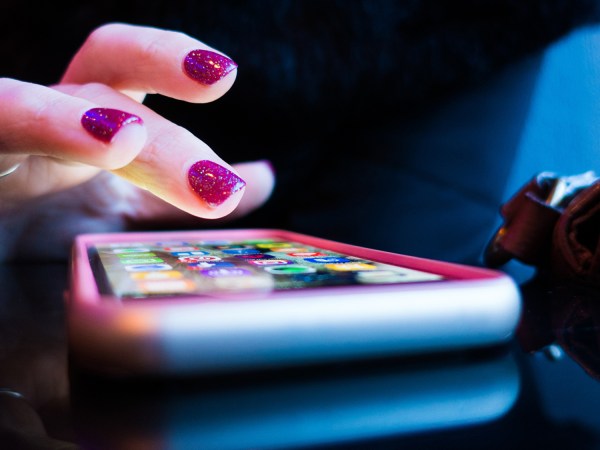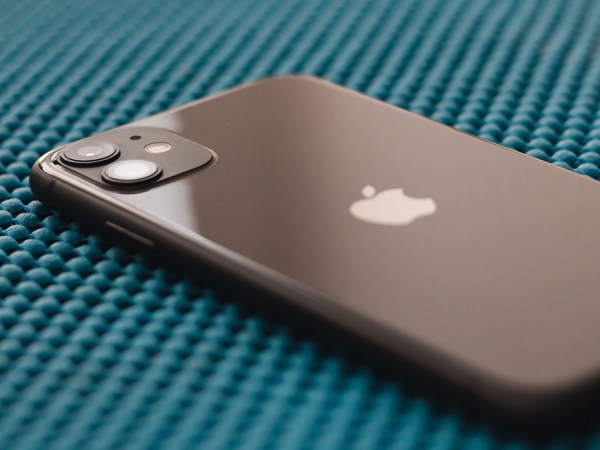

Reached the end of your mobile contract? Ready to upgrade? You’ve got more choice than ever when it comes to picking a new smartphone. But that also means sifting through the specs, makes, and models can be overwhelming. We’re here to simplify it for you.
To make this advice as universal as possible, we’ve stopped short of recommending particular phones, but you should be able to use the guidelines below to make an informed choice about whatever handsets are currently on the market.
iOS vs. Android
For some, the software platform their new phone runs on is the be-all and end-all of their phone choice. For others, it barely matters. There may have been significant differences years ago, but today, iOS and Android are more similar than ever. After all, they’ve been borrowing features from each other for years.
Most of your favorite apps, from Facebook to Spotify, will run just fine on both. And they each offer the same fundamental features that let you do everything you would want on a modern-day smartphone.
That said, Android remains the more customizable mobile operating system. If you want to, you can change small things like the default texting app or browser, or go all-out by revamping every icon and widget to create a truly personalized interface. Apps can also hook into deeper parts of the phone and take more control over it.
One example of this is screen recorder apps, of which there are several for Android. Apart from Apple’s own built-in tool, you won’t find any such apps on iOS—they just don’t have the necessary access to capture what’s on screen. Every app is built on a series of permissions—to see your location, to use your phone’s microphone, and so on—and being able to record what’s on screen while other apps are running is something Apple doesn’t allow iOS apps to request.

For better or worse, Apple’s iOS is more limiting in what it lets apps and users do on iPhones. Its fans would say that makes for a smoother experience, while its detractors would say it’s too restrictive. For instance, you can install Outlook and Gmail on an iPhone, but when you tap on a contact to send an email, the app that actually opens will always be Apple Mail.
iPhones are also designed to work primarily with other Apple gear, such as MacBooks and the Apple Watch. But, you can still easily sync your phone with iTunes on Windows or use it without a computer at all. To choose between Android and iPhone, you must also think about the other apps and platforms you use.
Despite some of the debates you might read online, Android and iOS are pretty much neck-and-neck in terms of performance and features. Each has its own feel and way of working, though. So if you’re already on one platform or the other, try grabbing a friend’s phone for 10 minutes to see what the other side looks like.
Decide whether to stay with what you have, or change it up
Unless you’re only just old enough to be getting your first phone, picking between Android and iOS is less about comparing the two and more about considering whether it’s worth the effort to switch. It’s no wonder Apple and Google want to lock users into their apps and services as tightly as possible.
If you’re heavily invested in the Google ecosystem (Gmail, Google Drive, Google Photos, and so on), switching between Android and iOS is pretty straightforward, whichever direction you’re going, because all Google’s apps are available on both platforms. Just install the Google apps on your new phone, and away you go.
If you’ve already spent a long time on Apple’s side of the fence, however, moving over to Android can be a real headache. You’ll need to extract yourself from iMessage, for instance, and none of the movies or shows you’ve bought on iTunes will work on Android—to watch them, you’ll need to use iTunes on a computer, an iPad, or an Apple TV.

To be clear, it’s not impossible to switch from an iPhone to an Android phone, but it can be difficult if you aren’t already using a lot of Google services on your Apple device. It largely depends how tightly you are tied into Apple’s various services, such as iCloud and Apple Mail, as you don’t get these apps on Android. The one major Apple app you do get on Google’s platform, however, is Apple Music.
If you’re upgrading from an existing phone, the easiest decision is often to just stick to what you know. The process will be quicker, and both iOS and Android let you set up a new phone from an old one, which means you can painlessly transfer a lot of your stuff over to your new handset.
That said, we’d also recommend checking out what the other side can offer, in case some new feature or function catches your eye, or you just prefer the interface. It might be worth your while to switch to an iPhone if you’ve just bought a MacBook and an Apple TV, or to move to Android if you notice you’re mostly using Google apps on your iPhone.
Both Apple and Google want to encourage you to come to their side of the fence, of course. Apple has a Move to iOS app for Android, while Google hosts a Switch to Android site that shows you how to move a lot of your stuff over with the help of Google Drive. Both cover photos, contacts, and calendar entries.
Check the specs
Smartphone specifications are broadly similar to computer specs: The processor controls how fast the phone can “think,” the RAM (random access memory) determines how much the phone can think about at once, and the storage space is how much room it provides for your apps, music, games, and other files. With the rise of cloud-based streaming services like Netflix and Spotify, though, storage space isn’t as important as it once was.
On top of that, you have the screen size and resolution. These affect the sharpness of images and text on screen, as well as how easy the phone is to hold in one hand. Options for the small-handed are dwindling, as the trend seems to be for bigger and bigger screens, pushing phones closer to tablet territory. Still, there are ways to use these larger phones with one hand if you really need to.
But unless you’re going to the very low-budget end of the market, or the ultra-premium high-end, smartphone specs don’t matter too much—much less than they do on your laptop. Any modern phone can run Facebook and Instagram, and you don’t need to break the bank for the latest hardware unless you want top-end games and intensive apps like video editors to run at top speed.

Other details to look out for are waterproofing and dust protection, and whether the phone accepts a memory card for expanding its on-board storage (some Android handsets do, but iPhones don’t). Another perk is wireless charging, which a lot of phones now offer for extra convenience.
One of the most important specs for any smartphone buyer is camera quality, which is usually listed in terms of megapixels (the size of the pictures) and aperture size or f-number (how much light the sensor lets in). More megapixels and a lower f-number usually means better pictures, but many factors combine to determine the quality of a smartphone camera.
Most phones now come with multiple camera lenses you can use to create single shots. Look out for the level of optical zoom (for getting closer to subjects), any mention of a wide-angle lens (for fitting more in the frame), and special camera modes for certain situations (like low light). When weighing your camera decision, you should also check out professional reviews, user reviews, and sample photos online.
Finally, battery life is another important consideration. Phone battery size is measured in milliampere hours (mAh), with a higher number meaning more juice. But many other factors, like the screen size and resolution, will affect how quickly that runs out. Again, check out online reviews and take the manufacturer’s quoted battery life with a pinch of salt.
Pick the right price
Perhaps the most important consideration for many of us is price. One quick way of narrowing down your choices for a new phone is to just set your budget and see what’s available in your price range.
Android phones have a lot more price points than iPhones do. In addition to their expensive flagship phones, most of the major Android manufacturers also offer decent mid-range versions for those on a tighter budget or with less demanding needs. That said, Apple has now settled into a routine of launching three iPhones per year, with older ones staying on sale at lower prices.
For the most part, phones that cost a few hundred dollars will serve you just as well as those that approach four figures, but you might have to sacrifice some screen resolution, camera quality, or app loading speed. For the phones on your shortlist, check out a few professional online reviews to gauge whether or not you’re getting the right value for your money.

Don’t forget the refurbished or second-hand options, either. Sure, you’re getting a handset that might be a little bit worn, but these devices will usually work just as well as brand-new ones, and the savings can be substantial. Make sure you buy from a reputable source and look for extras, like warranties, for your revamped gear.
Older phones are an option here, too—when new handsets arrive, the previous generation drops in price, even though they’re still quite capable. Shop around for flagship phones from the last 12-18 months, and you might be surprised to see what you can pick up on a budget.
If you are going for phones that haven’t just been launched, it’s a good idea to check what version of Android or iOS the handset is capable of running—the newer the better in terms of device stability, compatibility, and security.
Make your move at the right time
Last, but not least, you should consider the time of year when you plan to buy. Otherwise, your shiny new phone could be replaced within a few weeks. Apple usually launches new iPhones in September, and Google’s Pixels follow soon after. Most other manufacturers refresh their phones around February or March, though this can vary.
So if you’ve got your eye on a particular phone, check when it launched. If it’s coming up on its one-year anniversary, you might be better off waiting for the next version. You don’t have to do too much digging on the web to work out which phones are rumored to be launching within the next few months.
Buying around the time a new phone launches is a good strategy—you can spend big to get the latest and greatest, or you can take advantage of the sudden price drops that will inevitably be applied to the phones that just got replaced.
Of course, once you’ve decided on your dream phone, you’ll need a great case to go with it.















